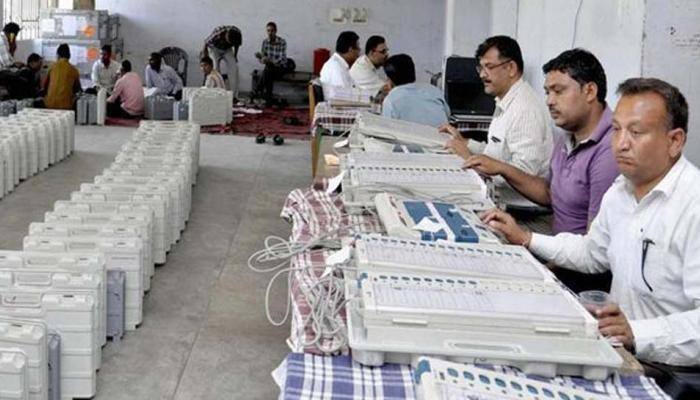 English
English

Counting of votes in the biennial elections for 27 seats of the Uttar Pradesh Legislative Council began on Tuesday. More details on Dynamite News:

Lucknow: Counting of votes in the biennial elections for 27 seats of the Uttar Pradesh Legislative Council began on Tuesday, officials said.
According to the Election Commission of India, an average polling percentage of 98.11 was recorded in the state on Saturday, with Rae Bareli registering the highest voter turnout at 99.35 per cent and Gorakhpur the lowest at 96.50 per cent.
For the ruling BJP, which came back to power with a two-third majority in the recently concluded assembly elections, it will be an opportunity to make itself the single-largest party in the House, and thereby enjoy a majority in both Houses of Uttar Pradesh Legislature.
Chief Minister Yogi Adityanath, who was among those who turned up early to exercise their franchise, had told reporters in Gorakhpur on April 9, In the recent assembly elections, the BJP (like in 2017) won more than two-thirds of the seats and formed a strong government. After four decades, a situation has come when a ruling party will be able to bag a huge mandate in the Legislative Council too.
There were 95 candidates in the fray and polling was held at 739 centres, according to the Uttar Pradesh chief electoral officer.
As many as 1,20,657 voters were eligible to exercise their franchise in these polls.
The local authorities' constituencies for which voting was held are Moradabad-Bijnor, Rampur-Bareilly, Pilibhit-Shahjahanpur, Sitapur, Lucknow-Unnao, Rae Bareli, Pratapgarh, Sultanpur, Barabanki, Bahraich, Gonda, Faizabad, Basti-Siddharthnagar, Gorakhpur-Maharajganj, Deoria, Azamgarh-Mau, Ballia, Ghazipur, Jaunpur, Varanasi, Allahabad, Jhansi-Jalaun-Lalitpur, Kanpur-Fatehpur, Etawah-Farrukhabad, Agra-Firozabad, Meerut-Ghaziabad and Muzaffarnagar-Saharanpur.
These seats are spread over 58 districts in the state.
Nine MLCs from eight local authorities' constituencies -- Budaun, Hardoi, Kheri, Mirzapur-Sonbhadra, Banda-Hamirpur, Aligarh, Bulandshahr and Mathura-Etah-Mainpuri -- have been elected unopposed.
Two MLCs were elected unopposed from the Mathura-Etah-Mainpuri local authorities' constituency, while one MLC each was elected unopposed from the remaining constituencies.
In the 100-member Legislative Council, the BJP currently has 34 MLCs, the Samajwadi Party (SP) 17 and the Bahujan Samaj Party four.
The Congress, the Apna Dal (Sonelal) and the NISHAD party have one member each in the House. The Teachers' group has two MLCs, while the Independent group (Nirdal Samooh) and Independents have one MLC each.
Currently, 38 seats are vacant.
The voters in this biennial election are village pradhans, members and chairmen of block development councils and zila panchayats, and corporators in urban areas. MLAs and MPs also vote.
The Congress and the BSP did not field any candidate in the Legislative Council elections, making it a direct fight between the BJP and the SP, the principal opposition in the state assembly.
Of the 36 BJP candidates, five are former SP leaders, who joined the saffron party ahead of the Assembly polls. (PTI)